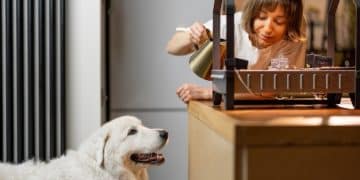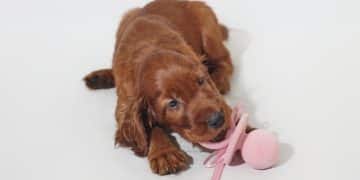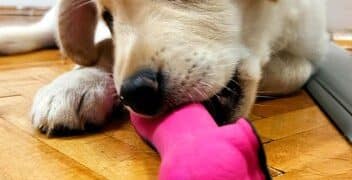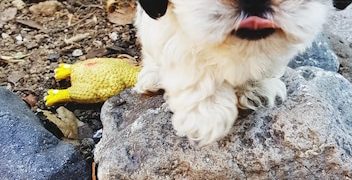Puppy Proofing Your Home: The Complete Safety Guide
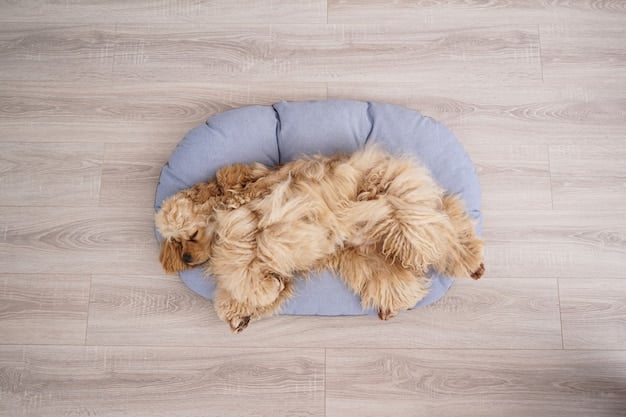
Puppy proofing your home is essential for the safety and well-being of your new furry friend, involving the removal of hazards, securing dangerous areas, and providing safe alternatives for chewing and exploration.
Bringing a new puppy home is an exciting time, filled with love and cuddles. But before your adorable furball starts exploring, it’s crucial to **puppy proof your home**, ensuring their safety and well-being from day one.
Why Puppy Proofing Is Essential
Puppies are naturally curious creatures. They explore the world with their mouths, which can lead to trouble if your home isn’t prepared. Puppy proofing isn’t just about protecting your belongings; it’s about preventing accidents and ensuring your puppy’s health and happiness.
Just like baby-proofing, it involves identifying potential hazards and taking steps to eliminate or minimize them. This proactive approach can save you from costly vet bills and, more importantly, protect your new companion from harm.
Understanding Puppy Behavior
Puppies use their mouths to investigate everything. Chewing is a natural behavior that helps them relieve teething pain and explore their environment. They don’t understand what’s safe or appropriate to chew on, making it your responsibility to provide safe alternatives and remove temptations.
- Curiosity: Puppies are naturally inquisitive and will explore every nook and cranny of your home.
- Chewing: Teething puppies need to chew to relieve discomfort.
- Lack of Awareness: They don’t understand danger and can easily get into trouble.
Consider your home from a puppy’s perspective – what can they reach, chew, or swallow? By understanding their behavior, you can better anticipate potential hazards and take preventive measures.
In essence, puppy proofing is about creating a secure and stimulating environment where your puppy can thrive without unnecessary risks. It provides peace of mind for you and a safe haven for your new family member.
Ultimately, investing time and effort in puppy proofing sets the stage for a positive and stress-free relationship with your new furry friend, allowing both of you to enjoy the exciting journey ahead.
Electrical Safety Measures
Electrical cords are a major hazard for puppies. They can chew through them, leading to electric shock or burns. Taking steps to protect your puppy from electrical dangers is crucial.
Start by unplugging appliances when they’re not in use. Store small appliances out of reach. This prevents the cords from being easily accessible to your curious pup.
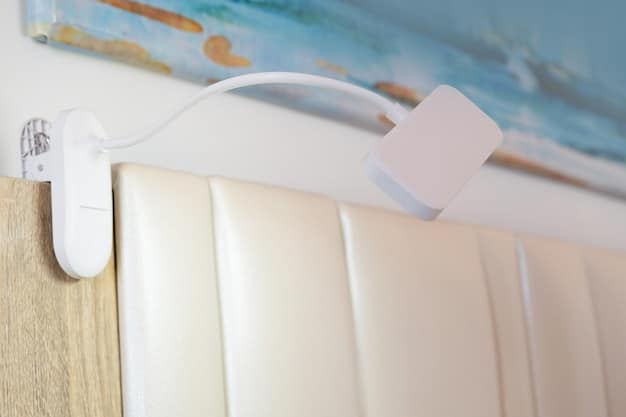
Cord Management Techniques
Loose, dangling cords are especially tempting for puppies. Use cord protectors, cord concealers, or cable ties to keep cords out of reach. Secure cords to walls or furniture to prevent them from dangling.
- Cord Protectors: These plastic or rubber tubes encase cords, making them less appealing to chew.
- Cord Concealers: These hide cords along baseboards or walls, keeping them completely out of sight.
- Cable Ties: These bundle cords together, reducing the number of tempting targets.
Regularly inspect cords for damage. Replace any cords that show signs of wear or chewing. Keep a close eye on your puppy around electrical cords, especially during the initial adjustment period.
Addressing electrical safety is a proactive step in creating a safe environment for your puppy. Preventing electrical accidents can save your puppy from severe injuries and ensure their well-being throughout their early months.
By implementing these measures, you can reduce the risk of electrical hazards and give your puppy the freedom to explore without compromising their safety. Remember, a little prevention goes a long way in keeping your furry friend safe and sound.
Securing Toxic Substances
Household cleaning products, medications, and certain foods can be highly toxic to puppies. Securing these substances is paramount to prevent accidental ingestion.
Store all cleaning supplies, detergents, and chemicals in locked cabinets or on high shelves out of your puppy’s reach. Even seemingly harmless products can cause serious health issues if ingested.
Identifying Common Household Toxins
Many common household items are poisonous to dogs. Knowing what to look out for is crucial. These items include:
- Cleaning Products: Bleach, detergents, and disinfectants.
- Medications: Prescription and over-the-counter drugs.
- Foods: Chocolate, onions, garlic, grapes, and artificial sweeteners (xylitol).
Be especially cautious with medications. Never leave pills lying around, and store them in child-proof containers. Always consult your vet before giving your puppy any medication.
Prompt action can minimize harm in case of accidental ingestion. Know the phone number of the ASPCA Animal Poison Control Center (APCC) and your veterinarian.
Securing toxic substances is a vital aspect of puppy proofing. Taking these precautions ensures a safe and healthy environment for your puppy, protecting them from potential poisoning and related health problems.
By being vigilant and proactive, you can prevent accidental poisonings and provide a secure home for your new furry companion. Remember, a little effort can make a big difference in your puppy’s well-being.
Protecting Furniture and Personal Items
Puppies explore their environment by chewing, which can lead to damaged furniture and personal items. Taking steps to protect your belongings is a necessary part of puppy proofing.
Remove valuable or delicate items from your puppy’s reach. Cover furniture with blankets or slipcovers to protect it from scratches and teeth marks. Consider investing in sturdy, puppy-safe furniture.
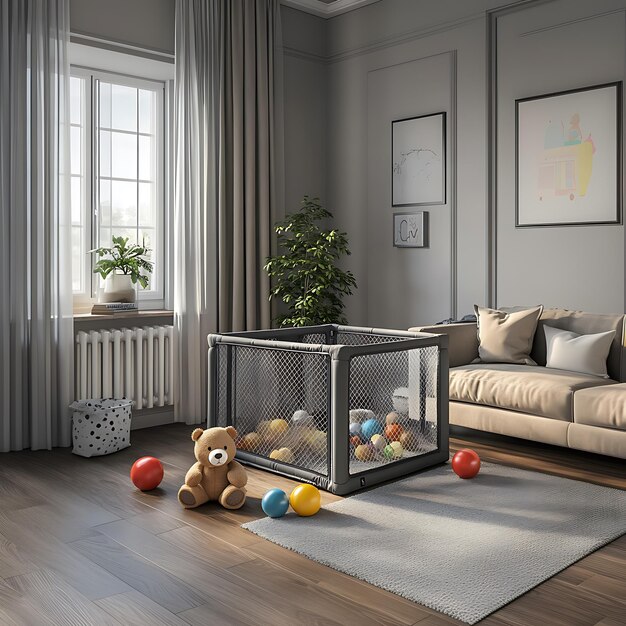
Providing Safe Alternatives for Chewing
Offer your puppy a variety of chew toys. Choose toys that are appropriately sized and made of durable, non-toxic materials. Rotate toys regularly to keep your puppy interested.
Chew toys fulfill the puppy’s natural urge to chew and reduce the likelihood of them gnawing on furniture or other inappropriate items. It also directs his attention to the chew toy and away from furniture.
- Nylabones: Durable nylon bones that are safe for chewing.
- Kongs: Rubber toys that can be stuffed with treats.
- Rope Toys: Braided cotton ropes that are great for chewing and playing.
Redirect your puppy’s chewing behavior. If you catch them chewing on something they shouldn’t, gently say “no” and offer them a chew toy instead. Positive reinforcement is more effective than punishment.
Protecting furniture and personal items is an ongoing process. As your puppy grows and develops, you may need to adjust your puppy proofing strategies.
By providing safe alternatives and redirecting inappropriate chewing, you can save your belongings and ensure your puppy’s safety.
Creating a Safe Outdoor Space
If you have a yard, it’s essential to ensure it’s safe for your puppy to explore. Creating a secure outdoor space involves checking for hazards and setting boundaries.
Inspect your yard for poisonous plants, sharp objects, and potential escape routes. Secure fences and gates to prevent your puppy from wandering off.
Identifying Potential Outdoor Hazards
Many outdoor elements can be dangerous for puppies. Be aware of the following:
- Poisonous Plants: Azaleas, rhododendrons, and lilies.
- Sharp Objects: Tools, gardening equipment, and debris.
- Escape Routes: Gaps in fences, open gates, and unsecured areas.
Supervise your puppy whenever they are outside. Keep them on a leash if necessary, especially in unfamiliar areas. Provide a shaded area and fresh water to prevent overheating.
A safe outdoor space allows your puppy to enjoy fresh air and exercise without unnecessary risks. Regular inspections and proactive measures can help prevent accidents and ensure their well-being.
Remember, a little effort in creating a secure outdoor environment will help you enjoy your puppy’s playful moments without worrying about their safety. By being attentive and responsible, you provide them with a safe and happy place to explore.
Supervision and Training
Even with the most thorough puppy proofing, supervision is crucial, especially during the first few months. Training can also play a significant role in reinforcing safe behaviors.
Always keep an eye on your puppy, especially in new environments. Early training helps teach them boundaries and what is acceptable behavior.
Using Positive Reinforcement Techniques
Positive reinforcement is the most effective way to train a puppy. Reward good behavior with treats, praise, or toys. Avoid punishment, as it can create fear and anxiety.
Effective training not only ensures a well-behaved pet but reinforces safe behavior, improving their chances for a safer environment, by teaching boundaries and limitations.
- Reward good behavior: Treats, praise, or toys can be used to encourage desired actions.
- Use clear commands: Simple words like “no” and “leave it” can be used to deter unwanted behaviors.
- Be consistent: Repeat commands and reward consistent behavior.
Enroll in a puppy obedience class. Professional trainers can provide valuable guidance and help your puppy learn essential commands.
Combined with puppy proofing, training can significantly prevent accidents and ensure your new companion behaves in a way that complements a safe, well-supervised environment.
Ultimately, the combination of proactive measures, supervision, and targeted training will help your puppy grow into a well-behaved and happy member of your family.
| Key Point | Brief Description |
|---|---|
| 🏠 Secure Home | Remove hazards & protect furniture. |
| ⚡️ Electrical Safety | Cover cords & unplug appliances. |
| 💊 Toxic Items | Lock away chemicals & meds. |
| 🌳 Safe Yard | Check for hazards & escape routes. |
Frequently Asked Questions
▼
Puppy proofing is crucial because puppies explore with their mouths and are unaware of dangers. It protects them from ingesting toxins, getting electrical shocks, or injuring themselves, ensuring their safety and health.
▼
Common toxic household items include cleaning products, medications (prescription and over-the-counter), certain foods like chocolate, onions, garlic, grapes, and products containing xylitol or other artificial sweeteners.
▼
Provide plenty of appropriate chew toys, redirect chewing behavior by offering a toy when they chew on furniture, and use deterrent sprays on furniture to discourage chewing, along with keeping the furniture covered and out of reach when possible.
▼
If you suspect your puppy has ingested something toxic, immediately contact your veterinarian or the ASPCA Animal Poison Control Center. Prompt action is essential to minimize harm and ensure a positive outcome.
▼
Supervision is extremely important, even with thorough puppy proofing. Constant vigilance, especially during the initial adjustment period, helps prevent accidents and reinforces training, ensuring the puppy’s safety. It’s key to observe their actions.
Conclusion
Puppy proofing your home is more than just a task; it’s an investment in the health and happiness of your new furry family member. It ensures a safe environment for them to explore, learn, and grow, paving the way for a long and joyful life together.
